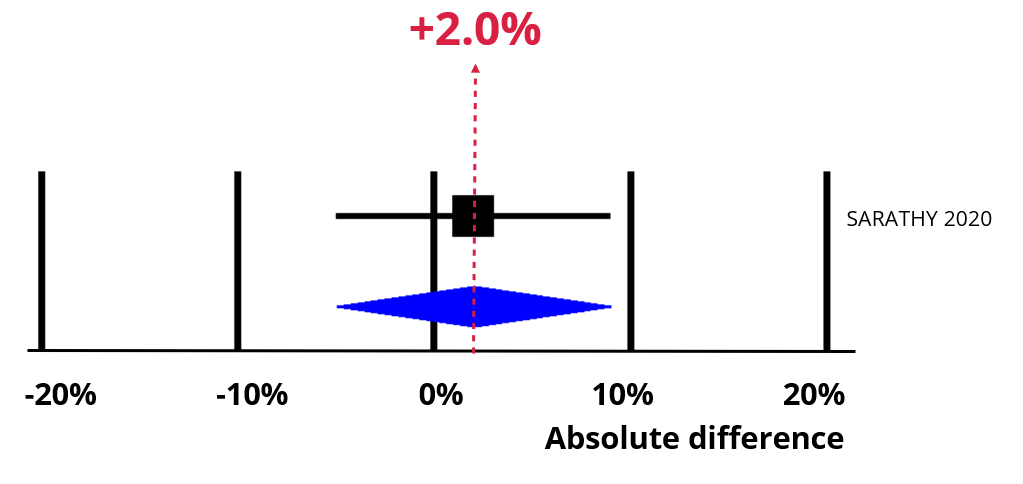Participants are sent an electronic prompt (SMS on the day of the questionnaire mail-out) instead of an electronic reminder (SMS 4 days after questionnaire mail-out).
Electronic prompts compared to electronic reminders may increase retention slightly.
An increase of 2% (95% confidence interval = -6% to 9%).
GRADE Low certainty.
We recommend that trialists consider using electronic prompts sent out at the time of questionnaire mail-out.
See Resource bundle below for details of how to set up prompts and text messages to form their content
Imagine initial retention is 65% of those approached. You have a trial with 100 participants that needs responses from 80 to meet its statistical power calculations. Retention of 65% means that you will be 15 responses short (see chart below).

Now imagine using electronic prompts. The chart below shows the impact of an absolute increase of 2% (95% CI = -6% to 9%). Retention is now 67%, which means our best estimate is that you would now only be 13 responses short.


Trial Forge will make trials more efficient by looking for marginal gains across all trial processes, from research question to implementation into routine care. It will encourage everyone connected with trials to be more sceptical of what we do by asking for the evidence behind all of our trial decisions.